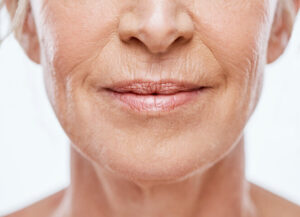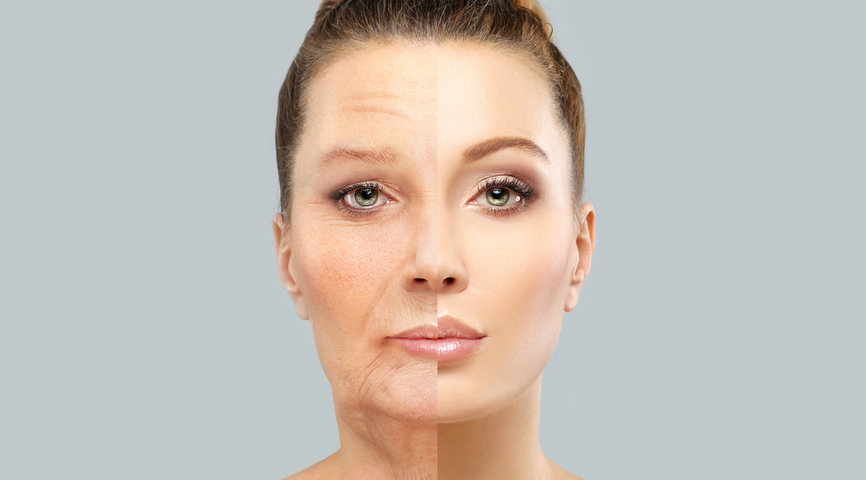A research team consisting of Professor Dong Sung Kim, Professor Anna Lee and Dr. Jaeseung Youn from the Department of Mechanical Engineering at POSTECH has successfully recreated the structure of wrinkles in biological tissue in vitro and uncovered the mechanisms behind their formation. Their findings have been published in the international journal Nature Communications.
Researchers Uncover Important Mechanisms in Wrinkle Formation
While wrinkles are often associated with skin ageing, many organs and tissues, including the brain, stomach and intestines, also show pronounced wrinkling patterns. These structures play a key role in regulating cell state and differentiation and contribute to the physiological functions of each organ. Understanding how biological tissue folds and wrinkles is critical to understanding the complexity of living organisms beyond cosmetic concerns. This knowledge can be central to advancing research in areas such as skin ageing, regenerative therapies and embryology. Despite the importance of biological wrinkle structures, much of the research in this area relies on animal models, including fruit flies, mice and chickens, due to the limited ability to replicate wrinkle formation in vitro. Therefore, the detailed processes underlying wrinkle formation in living tissue are largely unknown.

Professor Dong Sung Kim’s team has addressed this limitation by developing an epithelial tissue model consisting solely of human epithelial cells and extracellular matrix (ECM). By combining this model with a device that can exert precise compressive forces, they were able to recreate and observe wrinkle structures in vitro that are typically seen in vivo in the intestine, skin and other tissues. This breakthrough enabled them for the first time to recreate both the hierarchical deformation of a single deep wrinkle caused by a strong compressive force and the formation of numerous small wrinkles under mild compression.
Wide-Ranging Applications in Fields Such as Embryology, Biomedical Engineering, Cosmetics and More
The team also discovered that factors such as the porous structure of the underlying ECM, dehydration and the compressive force exerted on the epithelial layer are crucial to the wrinkling process. Their experiments showed that compressive forces that deform the epithelial cell layer cause mechanical instability within the ECM layer, leading to the formation of wrinkles. In addition, they found that dehydration of the ECM layer is a key factor in the wrinkling process. These observations closely mirrored the effects observed in aging skin, where dehydration of the underlying tissue layer leads to wrinkle formation, and provided a mechanobiological model for understanding wrinkle formation.
Professor Dong Sung Kim expressed the significance of the research by saying: “We have developed a platform that can be used to replicate various wrinkle structures in living tissue without the need for animal testing.” According to the researchers, this platform enables real-time imaging and detailed observation of wrinkle formation at cell and tissue level; processes that are difficult to capture in conventional animal models. It has wide-ranging applications in areas such as embryology, biomedical engineering, cosmetics and more.
Wrinkles and Heart Disease
Wrinkles are not just an unwelcome appearance and an inevitable consequence of ageing. According to research, they may also indicate something more sinister. Studies suggest that people with many deep frown lines, more than is typical for their age, have a higher risk of dying from cardiovascular disease (CVD). Assessing eyebrow wrinkles could be a simple and inexpensive way to identify people who belong to a high-risk group for CVD.
Risk factors such as high cholesterol or high blood pressure cannot be seen or felt. The researchers looked at forehead wrinkles as a marker because they are so simple and visual. Just looking at a person’s face could set off an alarm, then it could be possible to give advice on how to reduce risk. This advice could include simple lifestyle changes such as exercising more or eating a healthier diet.
The risk of heart disease increases with age, but lifestyle and medical interventions can reduce the risk. The challenge is to identify at-risk patients early enough to make a difference. According to the authors of the study, previous research has analyzed various visible signs of aging to determine if they may indicate cardiovascular disease. In previous studies, crow’s feet showed no association with cardiovascular risk, but these tiny wrinkles near the eyes are not only a result of age, but also of facial movements. A link has been found between male pattern hair loss, earlobe puckering, xanthelasma (cholesterol deposits under the skin) and a higher risk of heart disease, but not with an increased risk of death. The authors of the current prospective study examined another visible age marker – horizontal forehead wrinkles – to determine if they could be useful in assessing cardiovascular risk in a group of 3,200 working adults.
Wrinkles One of the First Signs of Vascular Ageing
The participants, who were all healthy and aged 32, 42, 52 and 62 at the start of the study, were examined by doctors who awarded points according to the number and depth of wrinkles on their foreheads. A score of zero meant no wrinkles, while a score of three meant “numerous deep wrinkles”. The study participants were observed for 20 years, during which 233 died for various reasons. Of these, 15.2% had two and three wrinkles. 6.6% had one wrinkle and 2.1% had no wrinkles. The authors found that people with a wrinkle score of one had a slightly higher risk of dying from cardiovascular disease than people without wrinkles. For people with a wrinkle score of two and three, the risk of death was almost ten times higher than for people with a wrinkle score of zero, after adjustment for age, sex, education, smoking status, blood pressure, heart rate, diabetes and lipid levels.
While forehead wrinkles are not a better method of assessing cardiovascular risk than existing methods such as blood pressure and lipid profiles, they could raise a red flag earlier, at a simple glance. The researchers do not yet know the reason for this association, which persisted even when factors such as job strain were taken into account, but they suspect it may be related to atherosclerosis or hardening of the arteries due to plaque build-up. Atherosclerosis is one of the main causes of heart attacks and other cardiovascular events. Changes in collagen protein and oxidative stress appear to play a role in both atherosclerosis and wrinkles. In addition, the blood vessels in the forehead are so small that they may be more sensitive to plaque formation, meaning that wrinkles could be one of the first signs of vascular aging.


